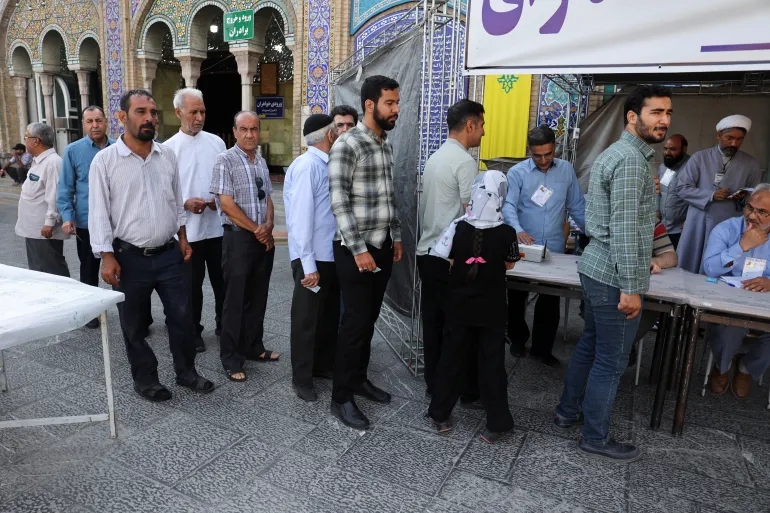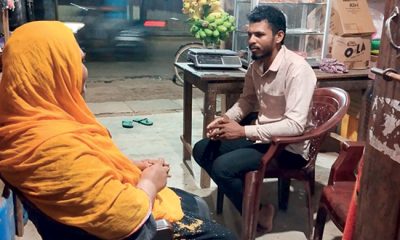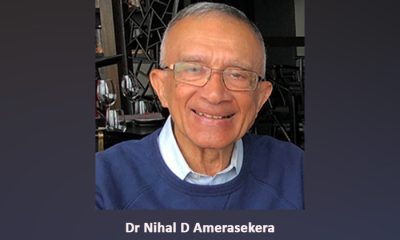Latest News
Voting under way in Iran’s snap presidential election

Iranians are voting for a new president following the death of Ebrahim Raisi in a helicopter crash, choosing from a tightly controlled group of four candidates loyal to the supreme leader at a time of growing public frustration.
Polls opened at 8am (04:30 GMT) on Friday and are scheduled to close at 6pm (14:30 GMT), but the time can be extended until midnight.
The snap election coincides with escalating regional tensions due to the current war between Israel and Iranian ally Hamas in Gaza and Hezbollah in Lebanon, as well as increased Western pressure on Iran over its nuclear programme.
While the election is unlikely to bring a major shift in the Islamic republic’s policies, its outcome could influence the succession to Ayatollah Ali Khamenei, Iran’s 85-year-old supreme leader, in power since 1989.
Khamenei called for a high turnout to offset a legitimacy crisis fuelled by public discontent over economic hardship and curbs on political and social freedom.
“The durability, strength, dignity and reputation of the Islamic republic depend on the presence of people,” Khamenei told state television after casting his vote. “High turnout is a definite necessity.”
Voter turnout has plunged over the past four years, as a mostly youthful population chafes at political and social curbs.
Manual counting of ballots means the final result is expected to be announced only in two days, though initial figures may come out sooner.
If no candidate wins at least 50 percent plus one vote from all ballots cast, including blank votes, a run-off between the top two candidates is to be held on the first Friday after the election result is declared.
Three candidates are hardliners and one is a low-profile comparative moderate, backed by the reformist faction that has largely been sidelined in Iran in recent years.
The next president is not expected to usher in any big policy change on the country’s nuclear programme or support for militia groups across the Middle East, since Khamenei calls all the shots on top state matters. However, the president runs the government day-to-day and can influence the tone of Iran’s foreign and domestic policy.
A hardline watchdog body made up of six scholars and six jurists aligned with Khamenei vets candidates. It approved just six from an initial pool of 80. Two contenders subsequently dropped out.
Prominent among the remaining hardliners are Mohammad Bagher Ghalibaf, parliament speaker and former commander of the air force of the Islamic Revolutionary Guard Corps (IRGC), and Saeed Jalili, a former nuclear negotiator who served for four years in Khamenei’s office.
The sole comparative moderate, Masoud Pezeshkian, is faithful to Iran’s theocratic rule, but advocates detente with the West, economic reform, social liberalisation and political pluralism.
His chances hinge on reviving the enthusiasm of reform-minded voters who have largely stayed away from the polls for the last four years after previous pragmatist presidents brought little change. He could also benefit from his rivals’ failure to consolidate the hardline vote.
All four candidates have promised to revive the flagging economy, beset by mismanagement, state corruption and sanctions reimposed since 2018, after the United States ditched Iran’s 2015 nuclear pact with six world powers.
In the past few weeks, Iranians have made wide use of the hashtag #ElectionCircus on X, with some activists at home and abroad calling for an election boycott, saying a high turnout would legitimise the Islamic republic.
[Aljazeera]
Latest News
ICC board votes to replace Bangladesh if they don’t travel to India

It is understood the ICC has told the BCB to inform the Bangladesh government that if Bangladesh continues to refuse to travel to India to play its matches in the 2026 T20 World Cup, then they will be replaced by another team at the tournament. That decision was followed by a vote, where the majority of the ICC Board was in favour of having a replacement.
BCB have been given one more day to come back to the ICC on its stance on playing in India.
If that is the case, then Scotland is likely to replace Bangladesh in Group C at the World Cup. Scotland had failed to qualify for the 2026 T20 World Cup, having finished behind Netherlands, Italy and Jersey at the European Qualifier.
[Cricinfo]
Latest News
Sri Lanka is an example of hope, recovery and resilience in a world of conflict – PM

Prime Minister Dr. Harini Amarasuriya participated in a high-level dialogue titled “Tourism as Soft Power and Diplomatic Capital” held at the Euronews Hub, Piz Buin Davos, on the sidelines of the World Economic Forum on January 20.
The session explored how tourism functions as a strategic instrument of diplomacy by strengthening international trust, cultural exchange, and regional cooperation through mobility and people-to-people engagement. The Prime Minister shared the panel with Mr. Kuban Omiraliyev, Secretary General of the Organization of Turkic States and Mr. Meshari Alnahar – CEO Aseer Investment Company, Saudi Arabia.
Addressing global trends, the Prime Minister emphasized that Sri Lanka is an example of hope, recovery and resilience in a world of conflict demonstrating how tourism can play a critical role in a changing global environment particularly amid climate shocks, geopolitical instability, and uneven economic recovery. She noted that tourism is not only an economic sector but also a vital diplomatic bridge that supports livelihoods, builds relationships and connects people.
Drawing on Sri Lanka’s recent experience, she highlighted the country’s strong tourism recovery despite multiple crises, including the impact of Cyclone Ditwah. Transparent crisis management and strategic engagement with international partners helped sustain visitor confidence, resulting in record tourist arrivals even in challenging circumstances.
The Prime Minister also underscored the importance of green and climate friendly tourism infrastructure and underlined that Sri Lanka welcomes long term investment in tourism. She pointed out that tourism supports millions of jobs worldwide and that inclusive policies are essential to ensure fair opportunities, particularly for women and vulnerable communities.
[Prime Minister’s Media Division]
Latest News
Brook needs to ‘regain trust of players’ after New Zealand nightclub incident

Harry Brook admits he was fortunate to keep his job as white-ball captain following a latte night alteraction with a nightclub bouncer in New Zealand, and says he is in the process of regaining the trust of his team.
Brook, now in Sri Lanka for England’s ODI series which gets underway on Thursday, was speaking for the first time since news broke that he had been disciplined for the incident in Wellington in October, for which he was fined £30,000 and put on a final warning for his off-field conduct.
“Obviously I made a terrible mistake,” Brook said. “Not only as a player, but as a captain. It’s very unprofessional and I should be leading from the front. “I’ve learnt from my mistakes, I’ve reflected a lot on what’s happened and I know it wasn’t the right thing to do. I want to say sorry to my team-mates, to all the fans that travel far and wide to watch, spend a lot of money on coming out to watch us play cricket and supporting us, and to the ECB for putting them in a tricky situation, and it’ll never happen again. I’m extremely sorry.”
Brook, along with a number of other England players, had been out drinking the night before the third ODI against New Zealand, with the match the final competitive fixture for England before the Ashes began three weeks later.
Brook, who says he then went on his own to a nightclub, says he was “clocked” by a bouncer when attempting to get in.
“We went out for a couple of drinks beforehand and then I took it upon myself to go out for a few more and I was on my own there,” Brook said. “I was trying to get into a club and the bouncer just clocked me, unfortunately. Like I said, I shouldn’t have been in that situation from the start. I wasn’t absolutely leathered, I’d had one too many drinks.”
Brook reported his actions to the management mid-game the next day, and came close to being sacked from his position as captain as a result.
“It was definitely going through my mind,” Brook said of the potential that he would lose his job, before adding that he had not at any stage considered resigning. “Never came into my mind. I left that decision to the hierarchy and, look, if they’d have sacked me from being captain, then I’d have been perfectly fine with it, as long as I was still playing cricket for England.
“Probably, yeah,” he added, when asked if he felt lucky to keep his job. “I think I’ve got a little bit of work to do to try and regain the trust of the players. I said sorry to them yesterday. I felt like I needed to say sorry for my actions. It’s not acceptable as a player, but as a captain it’s really not acceptable to do what I did in New Zealand. I’ll be the first person to say that. I hold my hands up.”
In the aftermath of the incident, which was kept private by England until after the Ashes had concluded, Brook sought help from Test captain Ben Stokes, who himself was involved in a high-profile nightclub fight in 2018.
“He obviously wasn’t best pleased at what I’d done,” Brook said. “But he tried to help me through it and he knows exactly what it feels like to be in this situation. We had a few conversations, but we quickly moved on.”
The news broke amid allegations of a drinking culture in English cricket, after players were regularly seen drinking alcohol during England’s tour of Australia.
“No, there’s no drinking culture at all,” Brook said. “Like I said, everybody has the ability to say no. If you want a drink, if you don’t want a drink, you’re allowed to make that decision yourself.
“It wasn’t just drinking [in Australia]. We weren’t just going out and getting leathered every day. We were having a few drinks here and there. We were playing plenty of golf, going to nice cafes, having coffees but we had a few drinks here and there. I don’t think that’s a bad thing. It’s just what human beings do.”
Despite this, England have introduced a curfew for their tour of Sri Lanka, with playing staff not allowed out past midnight.
“That’s been made as a group decision,” Brook said. “We think that it’s the best thing going forward, for the time being, to be able to put us in situations where we can win games of cricket and perform to the best of our ability.”
England play three ODIs against Sri Lanka, starting on Thursday in Colombo, before playing three T20Is ahead of next month’s World Cup. England have struggled of late in the 50-over format, losing 11 of their past 15 matches. That poor run of form will add extra pressure to the position of head coach Brendon McCullum, whom Brook threw his support behind, calling him “the best head coach I’ve had by a million miles”.
England have made a number of changes to their team since their last outing against New Zealand three months ago, with the return of Zak Crawley to the top of the order the most noticeable change. Crawley replaces Jamie Smith as opener, and will play his first List A game in over two years, having last played for England in December 2023. Elsewhere, Liam Dawson has been selected as the second spinner to accompany Adil Rashid in the middle-overs.
England : Zak Crawley, Ben Duckett, Joe Root, Jacob Bethell, Harry Brook (capt), Jos Buttler (wk), Will Jacks, Sam Curran, Jamie Overton, Liam Dawson, Adil Rashid
[Cricinfo]
-

 Editorial4 days ago
Editorial4 days agoIllusory rule of law
-

 News5 days ago
News5 days agoUNDP’s assessment confirms widespread economic fallout from Cyclone Ditwah
-

 Business7 days ago
Business7 days agoKoaloo.Fi and Stredge forge strategic partnership to offer businesses sustainable supply chain solutions
-

 Editorial5 days ago
Editorial5 days agoCrime and cops
-

 Features4 days ago
Features4 days agoDaydreams on a winter’s day
-

 Editorial6 days ago
Editorial6 days agoThe Chakka Clash
-

 Features4 days ago
Features4 days agoSurprise move of both the Minister and myself from Agriculture to Education
-

 Features3 days ago
Features3 days agoExtended mind thesis:A Buddhist perspective













